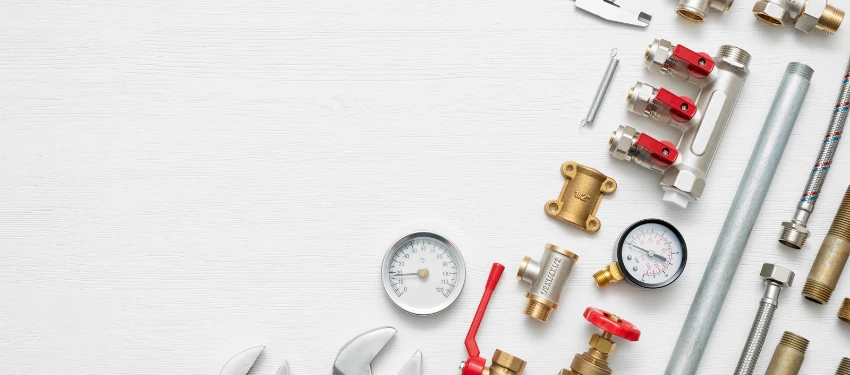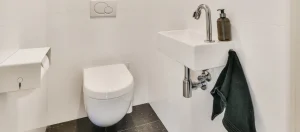Did you know that March 11 is World Plumbing Day? This day was initiated by the World Plumbing Council with the goal of spreading awareness on the importance of plumbing in protecting public health. Same Day Pros agree that we really should give a spotlight on one of the most essential systems in our house –the plumbing system. We usually don’t see this complex system of pipes and fixtures, but it is responsible for bringing water in and the removal of waste. We use it every day, from our kitchens down to our bathroom; can you imagine life without modern plumbing?
We cannot underscore the importance of plumbing in our homes, and this is why we want to discuss plumbing code violations in homes. We often hear reports about this with homeowners attempting DIY repairs and installations or hiring a handyman that doesn’t have enough knowledge, as well as proper training and license to undertake the job. The most common reason for homeowners is that they are hoping to save up or felt that it’s an easy job and they could learn it from the many tutorial videos present online. They unknowingly put their household at risk, in addition to violating the plumbing codes in the process. Some of the most common plumbing violations are improperly sized drainage, usage of illegal materials, not having enough space around the toilet, improper cleanouts, not installing proper fittings, improper slope, and more.
Building codes may vary depending on the state that you are in, but they all have a common goal and that is to preserve the health and safety of all affected individuals. As mentioned above, not following the plumbing codes will put your household’s safety at risk. You will also have problems if you decide to sell the property, or it may be that the DIY repairs and installation will work, but not at an optimum level. You may even spend a lot trying to correct the damages in your property that violate your plumbing code will surely bring.
Here are the most common plumbing code violations:
- Improperly sized drainage piping

One of the basic plumbing rules is using the right size of piping to match the drain requirement. Violation of plumbing code is usually observed when DIYers use a pipe that is too small for its function and purpose or the drain that it is being attached to. Of course, using a piping that is too big will also create another range of problems like leakage, and it will also ineffectively do its function.If you are planning to add or replace any piping, make sure that it matches the requirement of plumbing code, or better yet, call in the professional plumbers as they will know what proper piping to use.
- Usage of illegal or inappropriate materials
It doesn’t mean that a certain material may work it’s already at par with the plumbing code. Before using any fittings, piping, or any other components, make sure that you research not only what works best but if it doesn’t violate the plumbing code. Examples of materials that are not up to code in many states are rubber fittings and corrugated pipes to repair a toilet or drain.There are also some materials that were accepted before but through time, better materials are used to replace them, an example of this is galvanized pipes. Between the 1950s-1980s, galvanized steel pipes were dominantly used in the drainage system or water supply, but it was slowly replaced when copper piping was introduced. Though durable, the problem with galvanized steel pipes especially when used as water supply, is that it leaks into the potable water as it grows older, which is not safe (if you have this kind of pipe, have it replaced immediately or do not attempt to use it).
Also, did you know that using materials that are not designed for plumbing purposes is actually illegal? An example of this is using masking tape to seal some cracks or a plastic soda bottle to repair a broken pipe under your kitchen sink. Make sure that proper research is done or a professional will do the job for you.
- Not having enough space around the toilet

The plumbing code calls for sufficient space around the toilet. The minimum distance between the toilet and the wall is 15” on either side (measured from the centerline of the toilet). The distance may vary depending on your area, so again, proper research should be done before any installation of the toilet or moving it. This rule also is usually handy for bathrooms with small spaces, especially if the toilet will be first installed before the drywall.
- Issues with cleanouts
What are cleanouts? These are the maintenance access point to homeowners or plumbers to the plumbing system, making them very important.One violation related to cleanouts is when it is improperly placed. One rule for cleanouts is that they should be accessible, so placement is important. This means that there should be no form of obstruction (e.g., machinery, cabinetry, and the likes). It shouldn’t also be placed in an area near electrical equipment, areas vulnerable to flooding and for sanitary reasons, in close vicinity to the food prep area.
Another violation is when there are insufficient cleanouts. The required number of cleanouts will depend on the size of the system. They should also be installed at each change of direction that is more than 45 degrees in the building drain, soil line, and building sewer.
So in case you are planning on making changes in your plumbing and drains, make sure that your cleanouts are properly set.
- Using the wrong kind of fitting and materials

If you use the wrong kind of fitting, not only will you violate the plumbing code but it will cause some serious issues. It will result in an obstruction in the plumbing system, meaning backflow, clogs, leaks, and other issues in the system will happen. If you are selling your property, inspectors will surely spot this issue, as checking if you have the right fitting in different areas are part of their list.It is also important to know when to use certain materials that will best serve their purpose. For example, copper pipes may be required or PVC pipes will be more appropriate, this will depend on where to use them. Same with other essential plumbing components.
- Improper slope
The improper slope is another common plumbing code violation. Your plumber will tell you that all drainage pipes should be sloped to a particular degree. Why? This is to prevent clog build-ups and to help facilitate the flow of water. The improper slope will result in drainage issues and leakage. This is why knowledge of plumbing code is important, as it will definitely save you from this type of issue.In case you have to correct this issue, do not attempt to DIY and call in the pros, as you will have to remove the pipes and reinstall them to meet the proper sloping requirement.
- Incorrect installation of water heater pressure and temperature relief

Your water heater has a temperature and pressure valve that acts as a safety device. It prevents explosion by releasing the water in case the pressure and temperature inside the heater get too high. If the valve has been improperly installed then you’ll surely have a red mark from the inspector.Warning, this is not only a plumbing code violation but a safety issue as well that could result in a fatal explosion. This is a job for professional plumbers and shouldn’t be attempted by homeowners.
- Bathroom Venting
Your bathroom will most likely have an exhaust fan to help send out odors and steam out of the bathroom and into a vent. Ideally, the vent should lead directly outside, and the issue comes in when it ends up in an attic instead.Moisture will then collect in an attic and will cause a different issue like rotting. In addition, the combination of warmth and moisture will also cause molds and mildew to grow, which is a health hazard.
How to avoid plumbing code violations
 Coding violations don’t only mean fines and penalties, it also means that you are compromising the safety of your family and your property.
Coding violations don’t only mean fines and penalties, it also means that you are compromising the safety of your family and your property.
You now have the basic information on common plumbing violations. However, there are many codes in place and could be complex, especially for homeowners with no proper training and license. The best way to tackle plumbing issues and correct possible violations is to call in a trusted and professional plumber. Not only will they ensure that your current system meets all the plumbing codes, but will surely get the job done safely and properly, especially for major repairs, installation, and renovation.
A tip, before hiring a professional plumber, makes sure to ask for a license, proof of insurance, and estimate (you can ask up to 3 plumbers and compare prices).
Let Same Day Pro help you. To find a professional plumber near you, click here.






